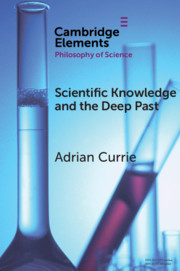Element contents
Scientific Knowledge and the Deep Past
Published online by Cambridge University Press: 01 August 2019
Summary
- Type
- Element
- Information
- Online ISBN: 9781108582490Publisher: Cambridge University PressPrint publication: 15 August 2019
Bibliography
- 32
- Cited by

